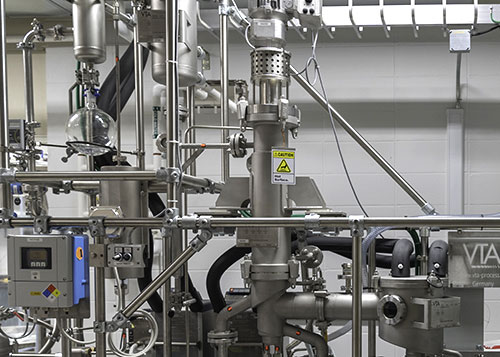Sensors
Liquid Scintillators
Large-volume organic-liquid scintillator (LS) detectors provide the necessary stopping power and sensitivity required for low-energy particle detection. Brookhaven’s Neutrino and Nuclear Chemistry Group within Brookhaven’s Energy and Photon Sciences (EPS) Directorate Chemistry Division has world-leading expertise and unique capabilities in the development of water Cherenkov detectors and metal-doped and water-based LS detectors ranging in size from tens of tons to kilotons. We have designed detectors for a variety of applications, including neutrino oscillation experiments, dark matter searches, nuclear nonproliferation activities, double-beta decay searches, and medical imaging studies.
Our Capabilities
- Development and characterization of LS detectors customized to meet specific scientific goals
- Synthesis of highly stable metal-doped LS acting as a detector medium or detector target
- Invention of water-based LS for large-scale operations that is capable of simultaneous Cherenkov and scintillation detection
- Demonstration and evaluation of prototype LS at 1000 L scale
- Production and purification of ton-scale LS at in-house facility
- Characterization of materials at the onsite Chemical Analysis Technology Laboratory
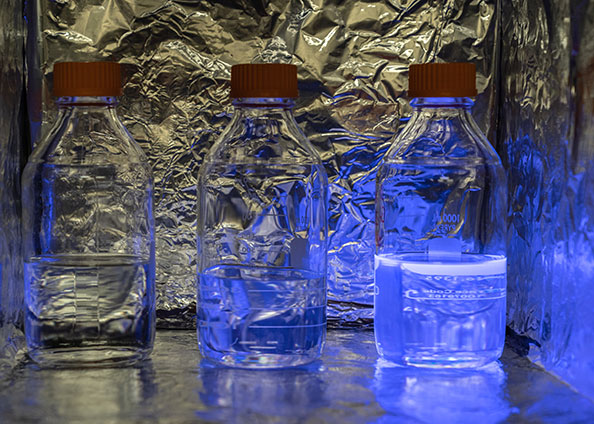
Water, a water-based LS, and an LS excited by ultraviolet light.
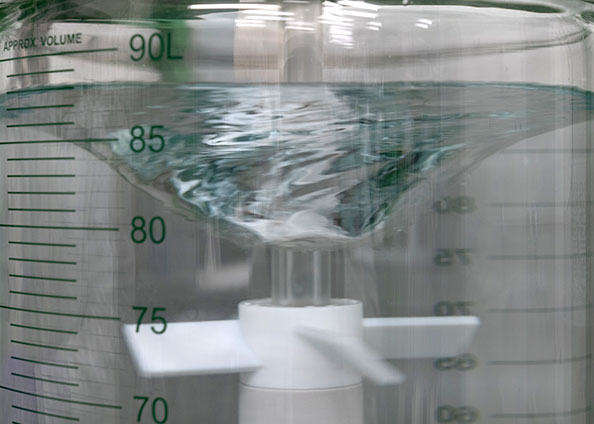
90-liter chemical reaction tank.
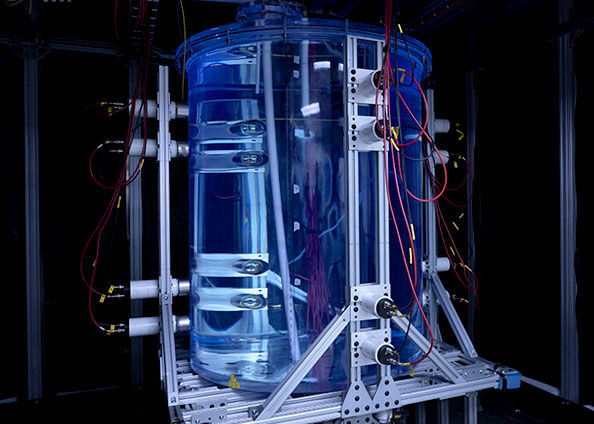
1,000-liter sequential liquid-mixing system.
Case Studies
Radiochemical Detection
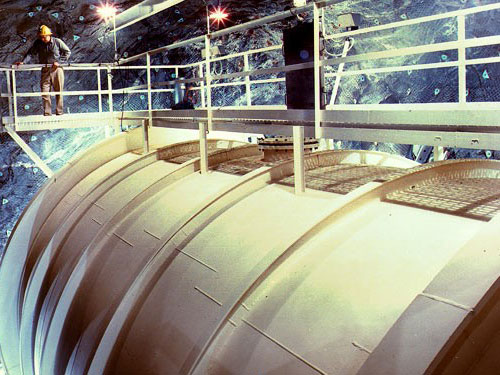
The Homestake detector consisted of a tank of 615 tons of perchloroethylene.
Our perchloroethylene radiochemical detector—the first detector to measure solar neutrino particles—was deployed in the Homestake Mine in South Dakota. The pioneering solar neutrino experiments conducted in Homestake led to a Brookhaven chemist and collaborators being awarded the 2002 Nobel Prize in Physics.
Gadolinium-doped LS
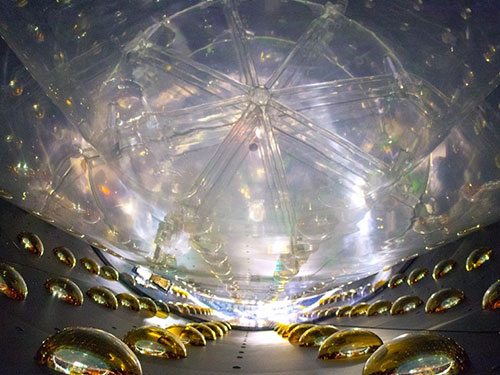
When filled with clear liquid scintillator, the detectors reveal antineutrino interactions by the very faint flashes of light they emit. Sensitive photomultiplier tubes line the detector walls to amplify and record these flashes. Credit: Roy Kaltschmidt/LBNL.
We developed and produced 200 tons of gadolinium (Gd)-doped LS for the Daya Bay Reactor Neutrino Experiment’s high-precision neutrino oscillation measurement (theta-13), which led to a 2016 Breakthrough Prize in Fundamental Physics. By improving the purity of this Gd-doped LS, we extended the detector medium to veto neutron-induced background for the LZ Dark Matter Experiment.
Liquid Purifications
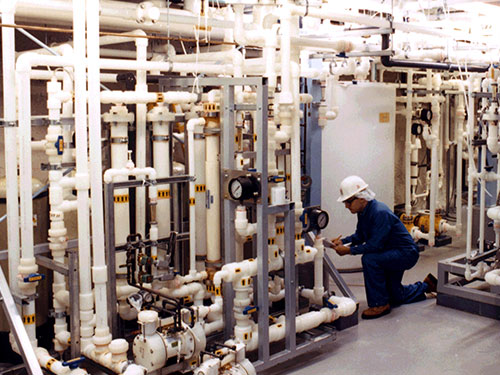
Some of the pipework for the water purification system of the Sudbury Neutrino Observatory.
As part of an international collaboration, we played a key role in the construction of water-purification systems for heavy- and light-water media and developed various chemical assays for a series of radioisotope measurements at the Sudbury Neutrino Observatory in Canada. Experiments conducted at this facility were key in showing that neutrinos could oscillate, or change identities, as they traveled through the atmosphere or through space—a 2015 Nobel Prize–winning discovery.
Water-based LS
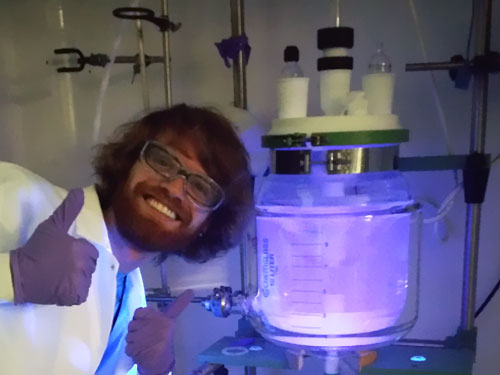
A UC Davis graduate student makes a water-based liquid scintillator in Brookhaven’s Chemical Analysis Lab.
In support of nonproliferation applications and neutrino research, we invented a cost-effective water-based LS (WbLS) detection medium for several-kiloton-scale experiments. With WbLS, we can detect particle events below the Cherenkov threshold by scintillation.
LS for Medical Applications
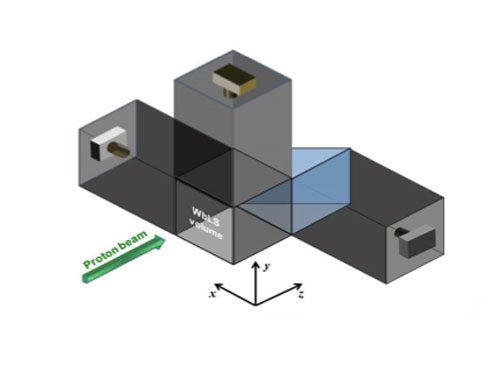
An illustration showing how a water-based liquid scintillator could be used for intensity-modulated proton therapy, which targets a tumor for radiation while sparing healthy surrounding tissue.
Our patented WbLS is designed for medical applications, including positron emission tomography (PET) and pencil-beam scanning, the most precise form of proton therapy available to cancer patients.
Lithium-doped LS
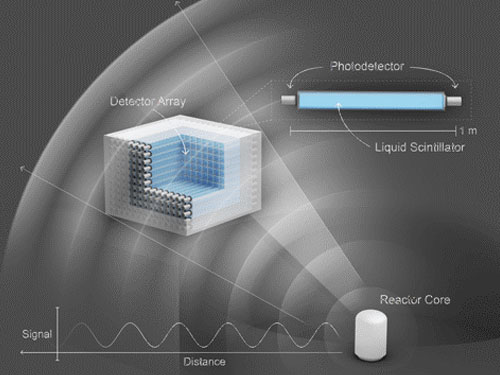
The PROSPECT detector will consist of an 11 x 14 array of cells filled with liquid scintillator, which is designed to sense antineutrinos emanating from the reactor core. Credit: Sean Kelley/NIST
We developed and produced the first highly stable lithium-doped LS (5 tons) with an unprecedented pulse shape discrimination capability for the PROSPECT short-baseline reactor neutrino detector. Our LS achieves the best surface-operated neutrino detection for distinguishing between different incident particles.




